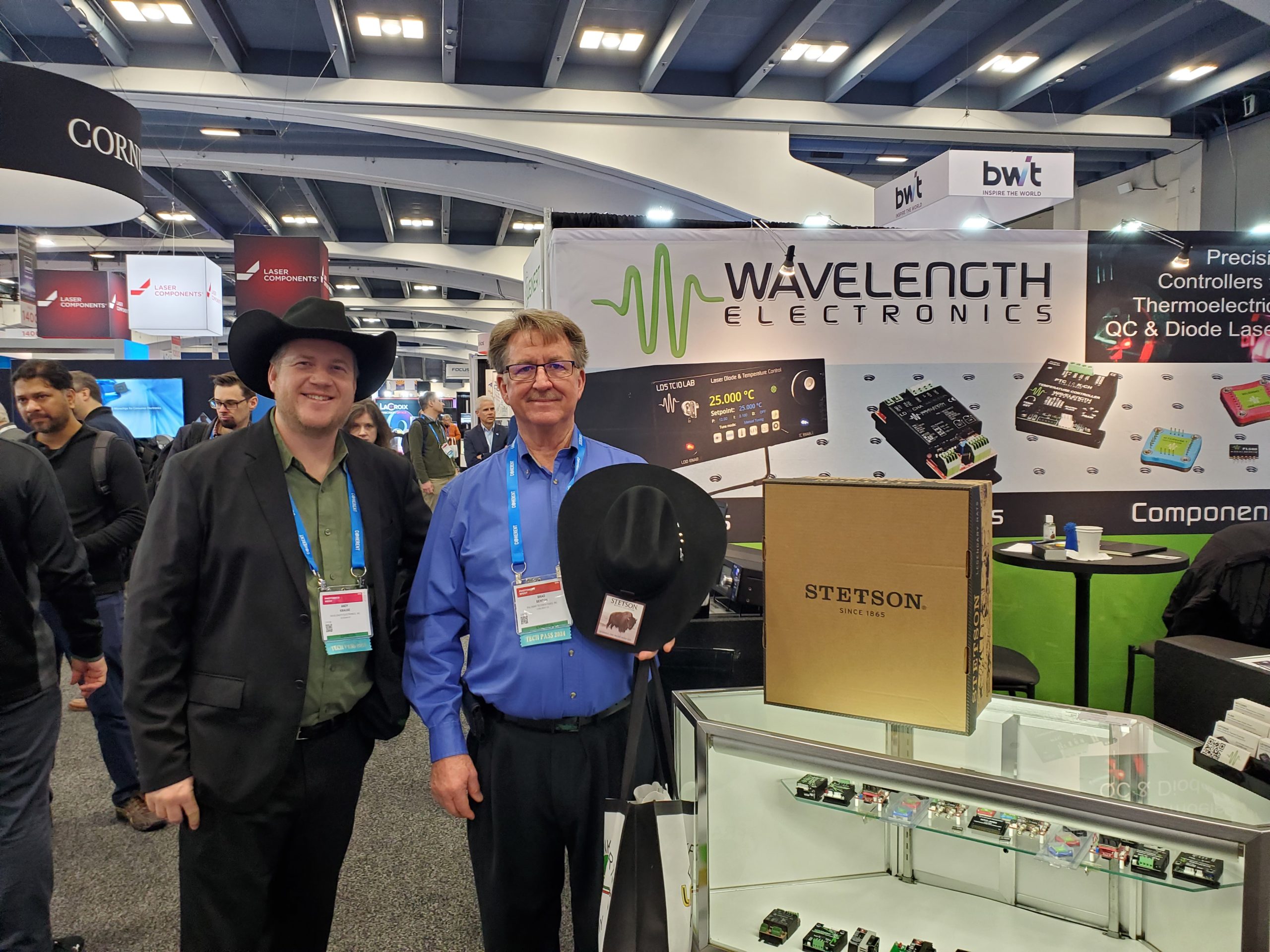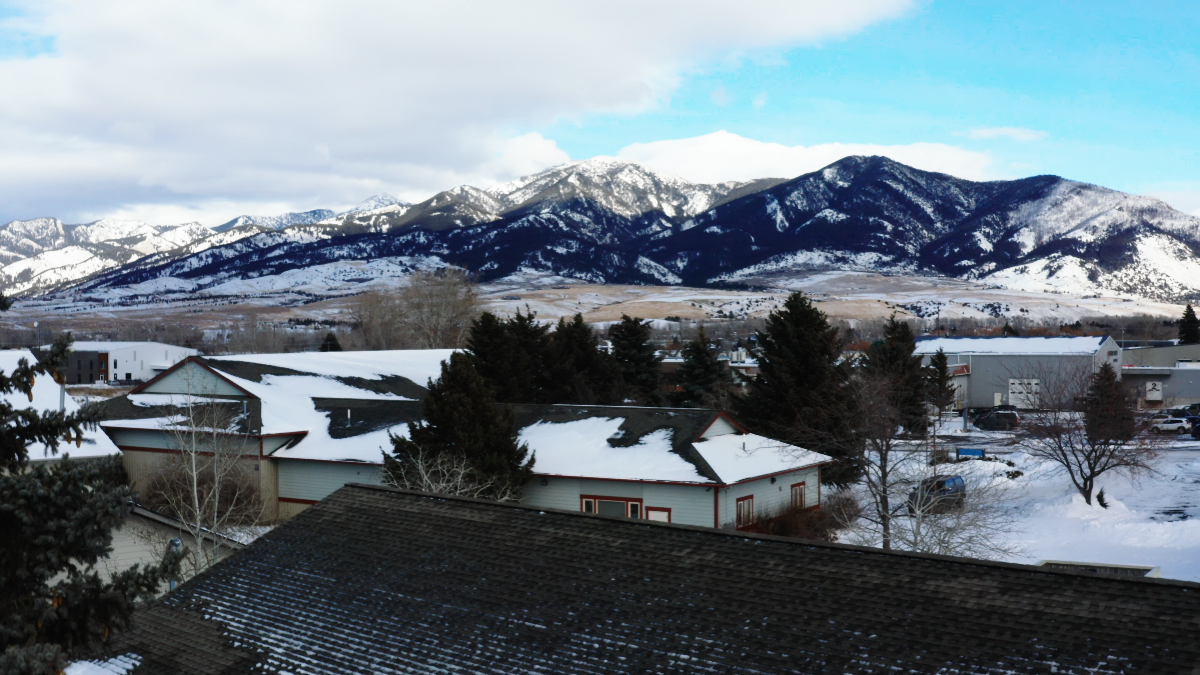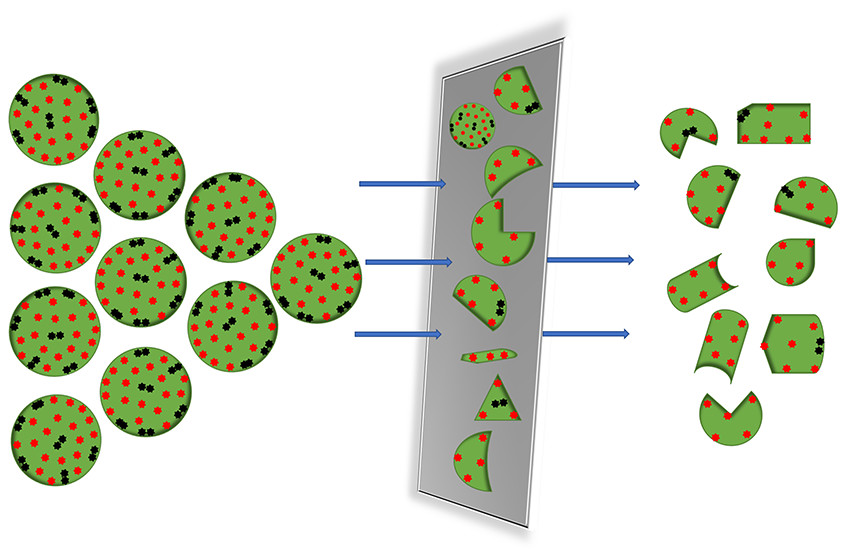
Photonics West 2024 Recap
We had a great time at Photonics West this year. People enjoyed the Yellowstone theme we presented with the Cowboy hat drawing. Many participants threw their business cards into the hat and one lucky person won the Stetson. He should be sporting it around Carlsbad, CA soon.
There was a lot of interest in the newly advertised custom design services, and many were pleased to know that we are welcoming all types of product variations around our standard products. Andy and Dirk are busy following up with all the people from the show who had special requests. Cheers to another successful Wavelength Photonics West show!

Subscribe to our newsletter for tips, techniques & product updates.
Researchers from the Netherlands have developed and demonstrated a new method of quantifying and characterizing antiviral properties of polymer-functionalized surfaces for virus filtration and inactivation. Specifically, a polyethylenimine (PEI)-coated poly(ether sulfone) (PES) micro-filtration membrane was used to adsorb, inactivate, as well as disassemble virus capsids. Using fluorescence microscopy, spectroscopy, and single particle counting, only a small fraction (1%) of intact viruses can pass through the membrane, and a large fraction of viruses became inactivated and disassembled. Not only does the virus adsorb onto the PEI coating, it also interacts with PEI to disassemble the virus capsid. This new method provides a simpler and faster quantification and characterization technique for virus filtration and inactivation in the medical and biological world.
In this single particle counting design with fluorescence microscopy, researchers benefited from Wavelength Electronics’ laser diode driver, LD5CHA, with worry-free setup and easy integration. The LD5CHA enabled precise current control of the laser diode with minimal electronic noise from the driver. As noise could contribute to any false positive readings, lower electrical noise may lead to better spectra recordings and data analysis. The peak fluorescence wavelength red- or blue-shifted by ~3 nm for intact or disassembled virus particles, and the laser driver ensured narrow linewidth from the laser diode for precise detection of the fluorescence spectra.
Researchers from Germany have developed and demonstrated a new diagnostic technique for obtaining local distribution of gas phase hydrogen peroxide (H2O2) in plasma jets. Continuous-wave cavity ringdown spectroscopy, with a quantum cascade laser at a wavelength of 8.12 μm, is used to determine the effective absorption length of a cold atmospheric pressure plasma jet and to determine the localized density of H2O2 in the effluent of the plasma jet. With axial and radial scans and radial distributions, the effective absorption length was calculated to be 1.6 mm close to the nozzle and 5 mm at a distance of 10 mm from the nozzle. The maximum density of H2O2 was 2 ˣ 1014 cm-3 in the center of the effluent close to the nozzle. This work shows the formation and consumption mechanisms of H2O2 and enables other biomedically relevant species in the plasma zone to be studied using this technique.
Measuring the localized density of H2O2 with high-accuracy requires high precision and stable control of the quantum cascade laser when using continuous-wave cavity ringdown spectroscopy (cw-CRDS). Wavelength Electronics’ QCL1000 OEM driver enabled precise current control with minimal electronic noise from the QCL. As laser linewidth is a major concern for QCLs, the QCL1000 OEM minimizes noise for open air measurements to as low as 0.7 μA up to 100kHz as well as keeping the average current noise density to as low as 2 nA / √Hz.
The stability of the QCL temperature is also critical for consistent wavelength output from the QCL. Wavelengths’ PTC5K-CH temperature controller, can precisely stabilize temperature to as low as 0.0012ºC. The QCL1000 OEM QCL driver and PTC5K-CH temperature controller enabled the localized density detection of H2O2 using cw-CRDS.
From our home and factory in Bozeman, Montana, we are pleased to announce a new service offering: Custom Engineering.
For over 30 years, we have researched best in class laser diode control circuitry. We started by bringing instrument level performance to OEM components, simplifying the design process for laser system engineers. Our off-the-shelf OEM laser diode and quantum cascade laser drivers and temperature controllers help with initial development and proof of concept where stable wavelength, power, current, or temperature are critical. Our LAB instruments, with intuitive touchscreens, simplify research now. We’ve come full circle.
We complement our solid foundation of circuit knowledge and firmware/software skills with high reliability electronics manufacturing. With a Return Rate consistently below 0.1%, we actively partner with our client’s manufacturing teams, delivering on time and navigating all the electronics supply chain issues.
Behind the scenes, we’ve also successfully built many custom assemblies that exactly fit a client’s need for form, fit, and function. Whether the need is for multiple channels, higher current, low noise, a different enclosure, (and much more!), we’ve responded with specific solutions that accomplish the desired end results. We’re now more widely announcing our capabilities and invite you to contact Andy Krause (andy@teamwavelength.com) with any requests.
I look forward to working more closely with you in 2024!
Warm Regards,
Mary

We invite you to contribute topic suggestions, questions, and general feedback. Wavelength will incorporate as much reader input as possible.
Click to Submit



